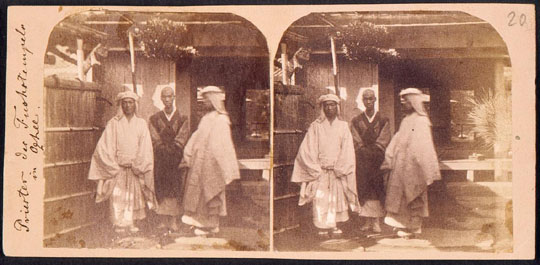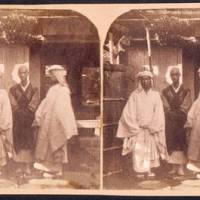The discovery in a German archive of documents and photographs related to the Prussian mission to Japan in 1860-61 has shed new light on the early history of photography in Japan. In particular, newly uncovered letters and records help explain the mystery of why so few images from the well-equipped mission survived and provide new facts on some of the earliest photographers in Japan.
Sebastian Dobson, a London-based independent scholar, made the discoveries in the Prussian State Archives (Geheimes Staatsarchiv Preussisches Kulturebesitz), a massive collection of historical material only recently consolidated in Berlin after the reunification of Germany. In a March 16 lecture in Tokyo to the Asiatic Society of Japan, Dobson presented a colorful tale of the willful suppression of an important photographic record and his attempts to restore it.
In 1860, the Kingdom of Prussia dispatched a diplomatic mission, led by Count Friedrich Albrecht zu Eulenburg, to initiate relations with Japan, China and Thailand. Unlike other missions that were sent to Japan before the Meiji Restoration by other Western powers, the Prussian mission had a specific commission to produce an artistic record of the people and places encountered. Thus, provisions for the mission included six cameras — an extraordinary number for the time — and enough glass plates and chemicals to produce over 1,200 photographs.
At one point during the Prussians' five-month stay in Edo (present-day Tokyo), there were no fewer than three photographers working alongside the two official artists. "It's surprising, given all these resources devoted to photography, that the photographs are absent from the otherwise lavish official iconography of the mission published between 1864 and 1873," Dobson told The Japan Times. "This curious omission was never explained at the time, and even today, the ultimate fate of most of the photographs remains a mystery."




